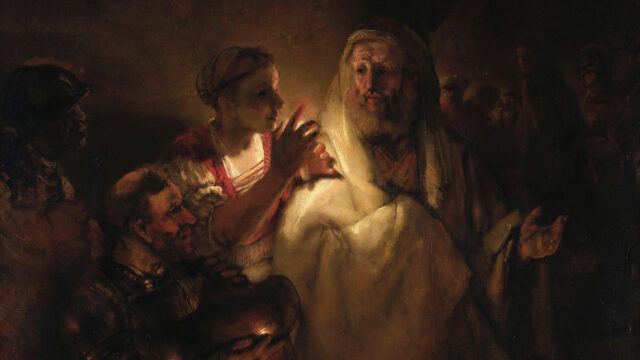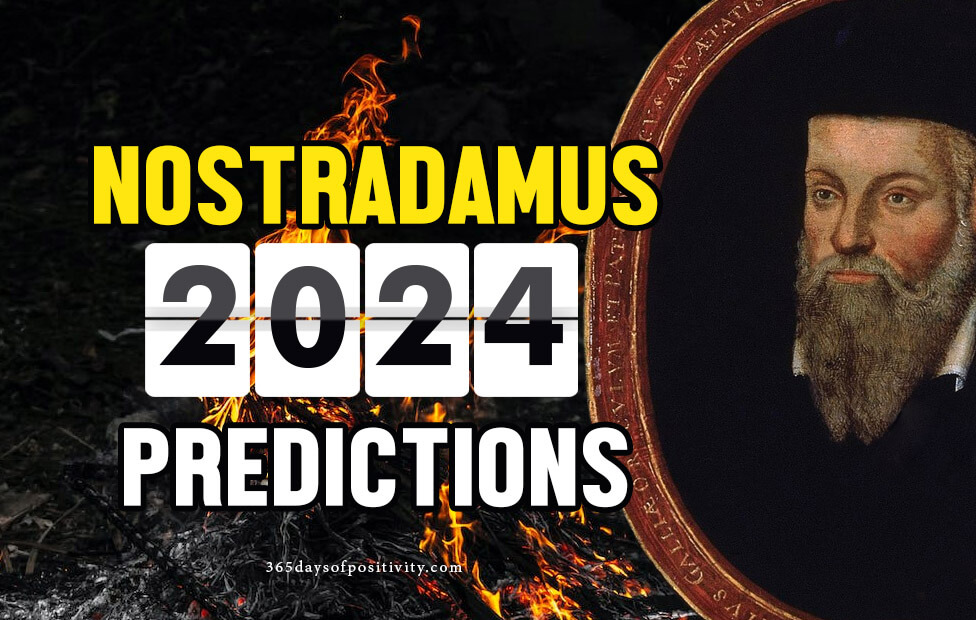
As another year draws to a close, a palpable sense of anticipation grips the world, mingled with an age-old curiosity about what the future may hold. From the dawn of civilization, humanity has gazed upon the horizon, eager to decipher the whispers of the days to come, and no figure looms larger in this timeless quest than Michel de Nostredame, better known throughout the ages simply as Nostradamus. He is, for many, the quintessential ‘prophet of doom,’ a 16th-century seer whose cryptic verses continue to spark fascination and trepidation in equal measure, offering glimpses of a destiny both terrifying and profoundly intriguing.
Born in Saint-Rémy-de-Provence, France, Nostradamus was a man of many facets: an astrologer, a physician, and a traveling apothecary. His chosen path led him, in particular, to tend to the victims of the devastating plagues that swept through Europe, a harrowing experience that undoubtedly shaped his perception of the world. Indeed, the profound trauma of losing his own wife and young children to illness, presumably the plague, is widely believed to have cast a long, dark shadow over his worldview. Unable to save those he loved most, it appears that he dedicated his subsequent years to a monumental task: to forewarn the rest of humanity through his profound and often disquieting revelations of impending ruin.
He claimed that his self-proclaimed prophetic instinct was ‘inherited from my forbears,’ leveraging his Jewish ancestry even after his family had converted to Catholicism. This unique combination of personal tragedy, professional dedication, and a claimed ancestral gift laid the groundwork for his most famous work. His reputation, fueled by a deeply personal commitment to understanding and perhaps averting future calamities, grew steadily, culminating in a magnum opus that would resonate across centuries.
It was in 1555 that Nostradamus presented the world with his famed book, “Les Prophéties.” Far from being a straightforward prediction, this was a “quasi-poetic tome” consisting of 942 enigmatic quatrains, each a condensed verse of foresight. Within these lines, he laid out a panoramic vision of the future, foretelling a grim tapestry of “wars, pestilence, natural disasters, civil unrest, political assassinations, and other such dismal matters.” The language was heavy, often stark, filled with imagery like “blood rain,” cementing its place as an enduring classic in the annals of prophecy.

The creation of these verses was as intriguing as their content. It is widely reported that many of his prophecies were dictated to his secretary while he was under the influence of large doses of nutmeg. As modern science understands, this spice can indeed act as a hallucinogen in significant quantities, suggesting that his mind was perhaps unbound by ordinary perception as he penned his apocalyptic visions. This unconventional method, while adding to his mystique, also contributed to his being viewed by many of his contemporaries as a “madman.” An unflattering assessment from 1558 labeled him a “certain brainless and lunatic idiot” who was prone to shouting his “nonsense… fantasies on the streets.”
Yet, despite such dismissals, Nostradamus’s fame undeniably grew. He capitalized on the burgeoning opportunities of his time; the newly – invented printing press had revolutionized the transmission of ideas, enabling his almanacs, which he produced annually from 1550 onwards and which included thousands of prophetic verses, to spread far and wide. This era of significant social division and profound uncertainty created fertile ground for someone who claimed to see into the future, offering a glimmer of understanding, however unsettling, in an unpredictable world. It was also around this time that he chose to Latinize his name, thus becoming the Nostradamus we know today.
The persistent allure of Nostradamus stems largely from the uncanny parallels drawn between his quatrains and actual historical events. His ardent followers enthusiastically claim that an astonishing “almost 70 percent of his predictions have proven to be true.” Indeed, a quick survey of alleged successes is impressive: he has been “credited with foretelling the Great Fire of London, Hitler’s rise to power, the Sept. 11, 2001 attacks, and the COVID – 19 pandemic, to name a few.” Beyond these, his prophecies are also said to have accurately foreseen the French Revolution, the rise and fall of Napoleon, the assassinations of JFK and Benazir Bhutto, and even the 2015 mass murders in Paris. This remarkable track record, whether through genuine foresight or ingenious interpretation, has solidified his position as history’s most famous seer.

However, it is crucial to approach these claims with a balanced perspective. While sometimes “on the money,” Nostradamus’s prophecies are more often described as “muddily missing the mark.” The very nature of his writings contributes to this ambiguity: they were composed in verse, known as quatrains, and critically, “they do not reference specific years and are undeniably difficult to interpret.” This inherent vagueness allows for a wide range of retrospective interpretations, sometimes making it easier to fit past events into his predictions than to genuinely foresee future ones.
Consider, for instance, the famous anecdote of Nostradamus predicting his own death. While commonly stated, the context reveals a less mystical truth: he made this prediction a mere day before he died, when he was already “near – bedridden with arthritis, dropsy, and arteriosclerosis.” This suggests a rational deduction based on his failing health rather than a clairvoyant revelation. There are other instances where his “predictions” for events appeared to be “inevitable, just days before the event,” or even referred to “events that had already happened,” which could certainly skew the perceived accuracy of his prophecies.
Yet, despite scholarly skepticism and the challenges of interpretation, the book “Les Prophéties” has “never gone out of print.” This enduring popularity speaks volumes about the human psyche’s profound desire for meaning, especially in times of great upheaval and uncertainty. His work is “still consulted by millions around the globe,” a testament to the powerful, almost hypnotic draw of the unknown and the hope, perhaps, that some ancient wisdom might offer guidance through turbulent times.
Nostradamus’s life and work encapsulate a fascinating intersection of historical context, personal trauma, and the timeless human quest to comprehend the future. His cryptic visions, born from a mind steeped in both the horrors of the plague and the dramatic shifts of the 16th century, have left an indelible mark on our collective imagination. As we stand at the threshold of 2023, poised to explore what fresh furies and hellfires his quatrains might suggest for the coming months, it becomes clear why this “prophet of doom” continues to grip us with his grim yet endlessly captivating forecasts. It is not merely about the predictions themselves, but the enduring journey of discovery into the mind of a man who dared to look into tomorrow, and perhaps, inspire us to ponder the path ahead ourselves.

As the curtain rises on another year, a collective human curiosity once again turns its gaze towards the enigmatic pronouncements of Michel de Nostredame. Having journeyed through his life and the peculiar genesis of “Les Prophéties,” we now stand poised at the threshold of 2023, ready to unearth the specific forecasts that have captured contemporary imagination. While his verses remain “undeniably difficult to interpret” and “do not reference specific years,” the human inclination to find patterns and draw parallels means his ancient wisdom is “still consulted by millions around the globe,” especially as anxieties about the future persist.
One of the most immediate and unsettling predictions attributed to Nostradamus for 2023 speaks directly to the gnawing concerns about our global economy. In a stark and rather graphic quatrain, he penned: “So high will the bushel of wheat rise, that man will be eating his fellow man.” This chilling imagery, while morbid and dramatic, resonates deeply with the current economic climate. In the aftermath of a devastating pandemic, unprecedented lockdowns, and the ongoing conflict in Ukraine, economies worldwide have indeed sailed into troubled waters. Soaring inflation, escalating fuel costs, and general economic tumult have become unfortunate realities for many. Many experts concur that these economic challenges are likely to persist, or even worsen, before any significant improvement is seen. Nostradamus, it seems, anticipated this pervasive sense of desperation and strife. The line about “eating his fellow man,” hopefully a poetic flourish rather than a literal prophecy, vividly underscores the potential severity of spiraling living costs and the extreme measures they might force upon society.
Another prominent theme in the perceived 2023 prophecies is a worsening climate crisis, a concern that echoes the very real scientific warnings of our time. Nostradamus seems to have foreseen the growing intensity of extreme weather events, writing a quatrain that speaks volumes: “For forty years the rainbow will not be seen. For forty years it will be seen every day. The dry earth will grow more parched, and there will be great floods when it is seen.” These lines, though ambiguous in the “forty years” reference, strikingly describe the dual threats of escalating CO2 levels and rising global temperatures. The references to “parched” landscapes and “great floods” are eerily consistent with the observable effects of global warming, where regions grapple with both prolonged droughts and devastating deluges. The very concept of the climate crisis remaining a “hot – button issue” in 2023 suggests a continuation of the environmental challenges that have become increasingly pressing globally.

Perhaps the most terrifying of all the potential 2023 predictions is the prospect of a “great war,” an ominous forecast that immediately brings to mind the ongoing geopolitical tensions. Nostradamus’s words, “Seven months great war, people dead through evil,” stand out starkly. While the conflict in Ukraine has been marked by “war crimes and a heavy civilian death toll,” it is speculated by some that this prophecy points to a more significant escalation into a “full – blown third world war,” potentially involving nuclear arsenals and leading to “apocalyptic levels of destruction.” The text even points to figures like “hate – mongering, death – dealing, Libra Vladimir Putin” as potentially embodying the “evil” that Nostradamus blamed. This aligns with the idea that the “devastating conflict in Ukraine which thus far has been marked by war crimes and a heavy civilian death toll” could apply, “albeit a bit late to the firefight,” to this grim prophecy. The mention of “Rouen, Evreux shall not fall to the King” in conjunction with this “Great War” quatrain, as cited in one source, adds another layer of historical or geographical specificity, suggesting regional implications within a larger conflict. However, a glimmer of a “faint silver lining” is noted in the “seven months” timeframe, implying a more “conventional war” rather than instant nuclear annihilation.
Adding to the grim tapestry of war, some interpretations suggest that the “Antichrist cometh” in or around 2023. Nostradamus reportedly wrote: “The antichrist very soon annihilates the three. Twenty – seven years his war will last. The unbelievers are dead, captive, exiled. With blood, human bodies, water and red hail covering the earth.” This disturbing vision of a blood – thirsty figure waging a long war has led to speculation about current global leaders. Given the context of the potential “great war,” there is a “strong indication that the antichrist could be Putin himself,” though other public figures like “Elon Musk’s Halloween costume and the Twitter response to it suggest that the madman is also in the running.” The graphic imagery of “blood, human bodies, water and red hail covering the earth” paints a truly apocalyptic picture, suggesting widespread death and devastation.
Beyond global conflict, the royal family is not exempt from Nostradamus’s dark foresight. A particularly intriguing line for 2023 suggests “Celestial fire on the royal edifice.” Interpreted literally, this could mean that a “meteor is headed straight for Buckingham Palace,” envisioning a catastrophic blaze that would “burn down the house.” However, the text also offers a more metaphorical reading, linking it to the recent “bombshell” Netflix series by “Prince Harry and Meghan Markle.” Their revelations are seen as “lighting up and tearing down the reputation of the royal family as we know it,” representing a “different kind of fire power.” This duality of interpretation highlights the very nature of Nostradamus’s prophecies – open to both literal and symbolic readings, making them adaptable to various contemporary narratives. One account also mentions “England Will Have a New King,” specifically stating that “Prince Charles will eventually ascend to the throne of Great Britain” after the Queen’s passing. While Queen Elizabeth II passed away in 2022, the prophecy regarding “celestial fire” and royal turmoil still holds weight in interpreting the shifting landscape of the monarchy under King Charles III.

Even humanity’s ambitious aspirations for space exploration, particularly colonizing Mars, might face a celestial setback according to Nostradamus. The cryptic line, “the light of Mars will go out,” has been interpreted as a potential disaster on Mars, possibly “thwarting Elon Musk’s plans to colonize the planet.” Musk himself had “suggested 2029 as the year in which astronauts would make this second giant leap,” and this prediction could signify a failed attempt or a major setback for these grand endeavors. The fact that Musk’s original target date for getting a human to Mars was earlier and is already “five years behind” lends some credibility to the idea of setbacks. This quatrain is notably part of the same one that includes the “seven – month ‘great war’” prophecy, implying that both the conflict and the “dimming of humanity’s Mars – focused fantasies will occur in the same calendar year,” intertwining global chaos with cosmic disappointment.
Furthermore, Nostradamus’s writings point to widespread “civil unrest.” He may have been alluding to the “growing gulf and animosity between social classes” with his alarming words, “sooner and later you will see great changes made, dreadful horrors and vengeances.” This vision of discord aligns chillingly with rising cost – of – living emergencies, mounting anger over environmental damage, and persistent income inequality, factors that could indeed “pave the way for serious civil unrest in 2023 and beyond.” Another quatrain paints an “equally dire vision of discord and violence”: “The trumpet shakes with great discord. An agreement broken: lifting the face to heaven: the bloody mouth will swim with blood; the face anointed with milk and honey lies on the ground.” This powerful imagery evokes a sense of betrayal and violent societal upheaval, perhaps suggesting a revolt against the wealthy or a breakdown of social order.
Among the more specific and perhaps equally disturbing predictions is the “Arrival of a New Pope.” It is suggested that Nostradamus foresaw the “death of Pope Francis,” to be succeeded by a “new pope,” a younger figure who would be “at the origin of a huge scandal that will shake the church until 2029.” This prophecy is rooted in the astrologer’s writing: “In the final persecution of the Holy Roman Church, there will be Peter the Roman, who will feed his flock in the midst of many tribulations, after which the city of seven hills will be destroyed and the terrible judge will judge the people.” This is a significant religious prediction that could have profound implications for the Catholic Church and its followers.
Beyond these major themes, Nostradamus’s quatrains are said to contain an array of other unsettling forecasts for 2023 or the near future. One such prediction mentions “The Destruction of a Large Empire,” with speculation pointing to “Russia or China.” This could imply a major geopolitical shift or even internal collapse. Linked to this, there is “a significant chance that a global catastrophe will occur, which will result in a significant increase in the number of victims and patients.” Another dire note speaks of “European Countries May Have to Deal With Depopulation,” which is chillingly attributed to “the ultimate consequence of the use of chemical weapons in addition to other conflicts related to nuclear technology.” This suggests a truly horrific scenario born from modern warfare.
The prophecies even descend into the realm of the bizarre and truly terrifying. One prediction warns of a “Huge Ants, Spiders Invasion,” triggered by a “magnitude 9.8 earthquake” that will “open a hole in the Mariana Trench,” leading to the “release of enormous species of ants, spiders, and locusts that will eventually take over the entire world.” This brings a distinct sci – fi horror element to the prophecies. Even more startling is the concept of a “Hybrid Human – Monkey Soldier Created in a Russian Laboratory,” with “Putin” allegedly giving “instructions to his scientists to create a human – monkey hybrid that will be immune to any illness and able to digest any type of food, including food that has been tainted with poison.” The quatrain states: “A monkey soldier of fortune with twisted tongue / will come to the sanctuary of the gods. / He will open the door to heretics / and raise up the Church militant.” Lastly, for those who seek extraterrestrial wonders, there is a prediction that “A Meteorite Full of Alien Species Will Reach Earth,” described as “gigantic… about the size of a blue whale,” containing “new kinds of metals as well as alien species.” These last few predictions clearly venture into the realm of extraordinary, almost fantastical, interpretations, highlighting the diverse ways Nostradamus’s cryptic words can be perceived.
It is paramount to reiterate that Nostradamus’s prophecies are, by their very design, “undeniably difficult to interpret.” They “don’t reference specific years” and are couched in obscure, “quasi – poetic” language. This inherent ambiguity allows for a wide array of retrospective analyses and contemporary applications. Critics argue that the vagueness makes it easier to “fit past events into his predictions than to genuinely foresee future ones.” Indeed, the “fact that Nostradamus was unable (or unwilling) to make exact predictions about precise dates means that his writings will be dismissed out of hand by many.” The “muddy” nature of his prognostications often leads to them “missing the mark” when held to strict scrutiny.
Yet, the enduring appeal of Nostradamus is undeniable. Despite the scholarly skepticism and the challenges of deciphering his cryptic verses, “Les Prophéties” has “never gone out of print” and continues to be “consulted by millions around the globe.” His dark visions for 2023, encompassing economic collapse, environmental catastrophe, global warfare, and societal unrest, resonate with a world that has certainly been through “seismic events in recent times” and grapples with “global turbulence and anxieties.” Whether through genuine clairvoyance or the powerful human desire to find meaning in chaos, Nostradamus continues to be the “prophet of doom” who, centuries later, still offers a grim, yet endlessly captivating, lens through which to ponder the path ahead. His prophecies serve not just as historical curiosities, but as reflections of our deepest fears and the perennial human quest to navigate an uncertain tomorrow.



